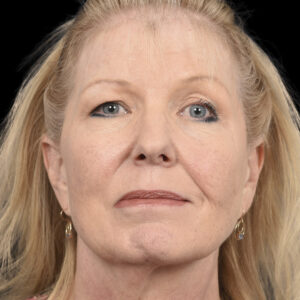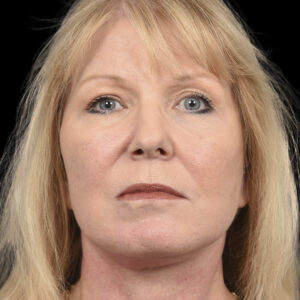Fat grafting is a procedure that enhances facial volume and contours by using a patient’s own fat. This technique restores lost volume, smooths wrinkles, and improves skin quality, creating a natural, youthful appearance.
Key Takeaways
- Fat grafting transfers your own fat to areas that need volume and rejuvenation.
- It can enhance facial contours, restore fullness, and smooth wrinkles.
- Recovery takes about two weeks, with final results improving over months.
- Ideal candidates have sufficient fat in donor areas and good skin elasticity.
- Choosing a skilled surgeon ensures natural, long-lasting results.
What Is Fat Grafting?
Fat grafting, also called fat transfer, is a surgical procedure that removes fat from one part of the body and injects it into areas that need volume. The most common treatment areas include the face, hands, breasts, and buttocks. This technique provides natural results while improving skin texture and quality.
The procedure involves three main steps:
- Harvesting – Fat is removed from donor sites, typically the abdomen, thighs, or flanks, using liposuction.
- Purification – The extracted fat is processed to remove impurities and excess fluids.
- Injection – Purified fat is carefully placed in small amounts to achieve smooth, even results.
How Is a Facial Fat Transfer Performed?
Fat Grafting Before & After Examples
Before fat grafting, patients may have hollow cheeks, deep wrinkles, or volume loss due to aging. Skin can appear thin, sagging, or less firm. Some patients may also seek fat grafting to correct contour irregularities from previous surgeries.
After fat grafting, the treated areas appear fuller, smoother, and more youthful. Patients often see improvements in skin texture, firmness, and elasticity. Because fat contains regenerative cells, it can also enhance overall skin quality.
Who Benefits from Fat Grafting?


Fat grafting is a great option for those looking for a natural approach to restoring volume and contouring the face or body. Unlike synthetic fillers or implants, this procedure uses a person’s own fat, reducing the risk of allergic reactions or rejection.
Candidates typically:
- Experience visible volume loss in areas like the cheeks, under-eye hollows, or hands.
- Prefer a long-lasting solution over temporary dermal fillers.
- Are in good health, without medical conditions that could affect healing.
- Have enough fat in donor areas, such as the abdomen or thighs, to allow for successful transfer.
- Want to correct contour irregularities from previous cosmetic procedures or aging.
- Are looking for subtle, natural-looking results rather than dramatic changes.
This procedure is widely used for facial rejuvenation, where it helps restore youthful fullness to the face. It’s also commonly used in breast reconstruction for patients who have undergone mastectomies, as well as in buttock augmentation for those seeking a fuller, more sculpted appearance. Fat grafting is a versatile option that can address multiple aesthetic concerns with long-term results.
How Long Does Fat Grafting Last?
Fat grafting results can be long-lasting. While some transferred fat may be reabsorbed by the body, a significant portion remains permanently. Final results take about three to six months to fully develop, once the fat establishes blood supply in the treated area.
Recovery Time for Fat Grafting
Recovery varies based on the treated area and the amount of fat transferred. Most patients experience swelling and bruising, which subside within two weeks. Final results take a few months as the fat settles and integrates with surrounding tissues.
Post-procedure care includes:
- Avoiding pressure on the treated area to allow fat survival.
- Keeping the donor and injection sites clean to prevent infection.
- Following the surgeon’s aftercare instructions for best results.
How to Change the Shape of Your Face
What Does Fat Grafting Cost?
The cost of fat grafting varies based on the treatment area, surgeon’s expertise, and geographic location. On average, prices range from $3,000 to $10,000.
Factors affecting cost include:
- The volume of fat required.
- The number of areas treated.
- Facility and anesthesia fees.
Since fat grafting provides long-lasting results, many patients see it as a cost-effective alternative to temporary fillers.
Common Problems with Fat Grafting
Although facial fat grafting is generally safe, some issues can arise, including:
- Uneven fat absorption – Some areas may retain more fat than others.
- Swelling and bruising – Temporary side effects that subside within weeks.
- Fat reabsorption – Some of the transferred fat may not survive, requiring touch-ups.
- Infection or lumpiness – Rare but possible, depending on post-surgery care.
A skilled surgeon minimizes these risks by using precise techniques for fat placement and ensuring proper post-procedure care.
Fat Grafting vs. Dermal Fillers
Both fat grafting and dermal fillers add volume, but they have key differences:
| Feature | Fat Grafting | Dermal Fillers |
| Material Used | Your own fat | Synthetic substances like hyaluronic acid |
| Longevity | Long-term, often permanent | Temporary, lasts 6-18 months |
| Benefits | Natural feel, regenerative effects | Quick results, minimal downtime |
| Risks | Fat reabsorption, uneven volume | Allergic reactions, migration |
If you’re considering facial fat transfer, consulting with an expert will help determine which option is best for you.
Alternatives to Fat Grafting
If fat grafting isn’t the right fit, other options include:
- Dermal fillers – Temporary solution for volume loss and wrinkles.
- Implants – Provides more defined augmentation for areas like the chin and cheeks.
- Thread lifts – Lifts sagging skin without adding volume, offering subtle enhancement.
- Laser skin treatments – Helps refine skin texture, reducing wrinkles and fine lines.
- Surgical fat transfer – Another form of fat grafting used in body contouring procedures.
Each alternative has its advantages, and the best option depends on your goals, anatomy, and desired outcome.
Why Choose Fat Grafting?
Fat grafting provides a natural, long-term solution for restoring volume and enhancing facial structure. Since it uses your own fat, there’s no risk of allergic reactions. It also improves skin quality and offers permanent results, unlike temporary fillers.
If you’re considering fat transfers, consult a specialist to see if it’s the right option for you.
If you’re looking to restore volume and enhance facial contours, fat grafting may be the perfect solution. Work with an expert to ensure safe, natural results.
Contact us today to schedule a consultation and learn more about facial reshaping.
Final Thoughts on Fat Grafting
Fat grafting is a natural and long-lasting way to restore volume, smooth wrinkles, and enhance facial contours. Since it uses your own fat, it provides a safe and effective alternative to synthetic fillers. The results are gradual, improving over time as the fat integrates with surrounding tissues.
If you’re considering facial fat grafting or other rejuvenation options, consulting a skilled surgeon is the best way to determine the right approach for your needs. With proper care and an experienced provider, you can achieve natural, youthful, and long-lasting results.